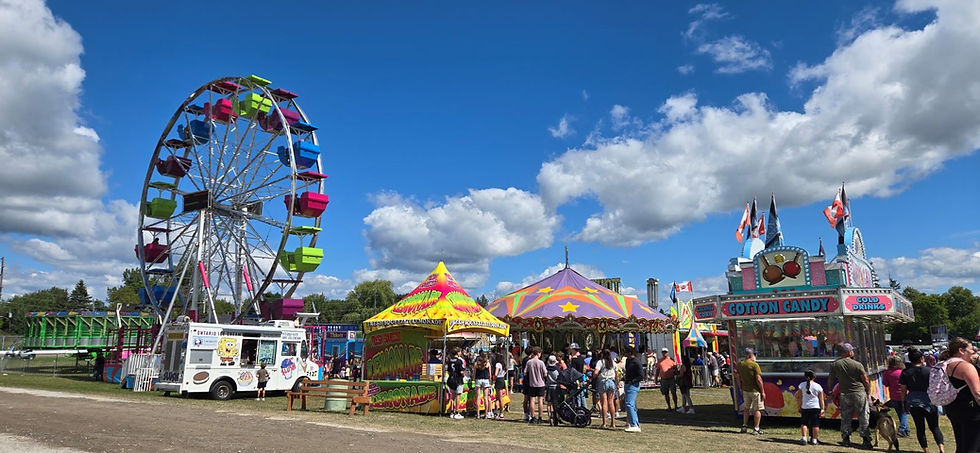TREES: planting trees on your land in Durham Region
- Colleen Green
- May 4, 2022
- 2 min read
COURTNEY McCLURE,
The Standard
NORTH DURHAM: Durham Region has five local conservation authorities spread throughout the region. These five conservation authorities joined together to create TREES.
TREES is a subsidized tree planting program for private landowners. These landowners must be willing to fill at least two acres, with a minimum of 500 tree saplings.
If your property has about 0.8 hectares or more, TREES can help you start a new forest. Even if you don’t qualify for this program, TREES asks you to contact them to discuss other available tree planting programs.
Your property must also be located within one of the five conservation areas which make up TREES. These are Central Lake Ontario, Ganaraska Region, Kawartha Lakes, Toronto and Region Conservation Authority and Simcoe Region conservation areas.
TREES’ plantation program offers full planting services, native seedlings and up to 85 percent of the funding for allowed projects. Depending on your land, the tree seedlings will be planted by hand or machine.
The goal of this “climate action initiative” is to provide environmental management, protection and enhancement through increasing forest coverage throughout the Region by at least 30 percent.
The funding for TREES comes from Durham Region and various conservation partners.
TREES provides seedlings for planting. The tree seedlings are about 2-4 years old and are also about 20 to 30 centimetres tall.
When you’re starting a forest, TREES recommends planting conifers first. They are hardier, and, as they grow, they create an easier environment for other species of tree.
It takes about fifty years for a forest-based on conifer trees to diversify. And it takes about one hundred years, partnered with excellent forest management, for the plantation to reach a blend of coniferous and deciduous trees.
“The investment you are making today will benefit you but will be an even greater benefit to future generations!” stated TREES.
A few conifer species provided through the program include white spruce, white cedar and tamarack. Examples of available species of deciduous trees include sugar maple, burr oak and hackberry.
Starting a tree plantation project can increase your property’s value, and provides you with the opportunity to apply for a property tax credit and more.
For more information about TREES and how to access their planting program, please visit their website at durhamtrees.org.






무료카지노 무료카지노;
무료카지노 무료카지노;
google 优化 seo技术+jingcheng-seo.com+秒收录;
Fortune Tiger Fortune Tiger;
Fortune Tiger Fortune Tiger;
Fortune Tiger Slots Fortune…
站群/ 站群
gamesimes gamesimes;
03topgame 03topgame
EPS Machine EPS Cutting…
EPS Machine EPS and…
EPP Machine EPP Shape…
Fortune Tiger Fortune Tiger;
EPS Machine EPS and…
betwin betwin;
777 777;
slots slots;
Fortune Tiger Fortune Tiger;
google 优化 seo技术+jingcheng-seo.com+秒收录;
谷歌seo优化 谷歌SEO优化+外链发布+权重提升;
Fortune Tiger Fortune Tiger;
Fortune Tiger Fortune Tiger;
Fortune Tiger Fortune Tiger;
Fortune Tiger Slots Fortune…
gamesimes gamesimes;
站群/ 站群
03topgame 03topgame
betwin betwin;
777 777;
slots slots;
Fortune Tiger Fortune Tiger;
google seo google seo技术飞机TG-cheng716051;
03topgame 03topgame
Jogos JOGOS
Fortune Tiger Fortune Tiger;
Fortune Tiger Slots Fortune Tiger…
Fortune Tiger Fortune Tiger;
EPS машины EPS машины;
Fortune Tiger Fortune Tiger;
EPS Machine EPS Cutting Machine;
EPS Machine EPS and EPP…
EPP Machine EPP Shape Moulding…
EPS Machine EPS and EPP…
EPTU Machine ETPU Moulding Machine
EPS Machine EPS Cutting Machine;
谷歌seo优化 谷歌SEO优化;
Fortune Tiger Slots Fortune…
Fortune Tiger Fortune Tiger;
Fortune Tiger Fortune Tiger;
Fortune Tiger Fortune Tiger;
Fortune Tiger Fortune Tiger;
Fortune Tiger Fortune Tiger;
Fortune Tiger Fortune Tiger;
EPS машины EPS машины;
EPS машины EPS машины;